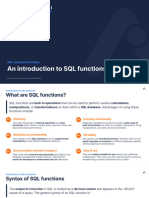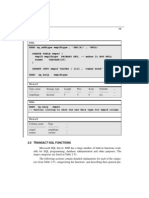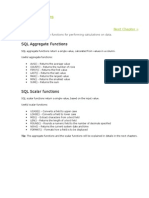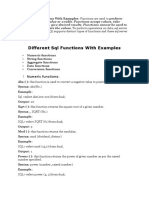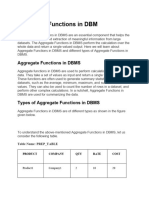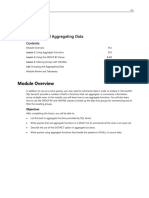0% found this document useful (0 votes)
37 views12 pagesTransact SQL
T-SQL is a query language used in Microsoft SQL Server that adds procedural elements like variables, transactions, and error handling to SQL. It allows importing data with BULK INSERT and provides string and data functions. Aggregate functions operate on collections and return single values for counting, summing, averaging, finding minimums and maximums. Rank functions allocate integer ranks within groups. Scalar functions always return a single value from an input and include functions for case conversion, substring extraction, length, rounding, and formatting.
Uploaded by
Fabius Guidao-oabCopyright
© © All Rights Reserved
We take content rights seriously. If you suspect this is your content, claim it here.
Available Formats
Download as PPTX, PDF, TXT or read online on Scribd
0% found this document useful (0 votes)
37 views12 pagesTransact SQL
T-SQL is a query language used in Microsoft SQL Server that adds procedural elements like variables, transactions, and error handling to SQL. It allows importing data with BULK INSERT and provides string and data functions. Aggregate functions operate on collections and return single values for counting, summing, averaging, finding minimums and maximums. Rank functions allocate integer ranks within groups. Scalar functions always return a single value from an input and include functions for case conversion, substring extraction, length, rounding, and formatting.
Uploaded by
Fabius Guidao-oabCopyright
© © All Rights Reserved
We take content rights seriously. If you suspect this is your content, claim it here.
Available Formats
Download as PPTX, PDF, TXT or read online on Scribd
/ 12







